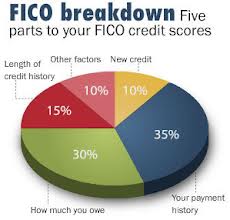The Federal and Provincial Governments have Limitation Acts which provide a limit on the time an unsecured debt can be perused by legal proceedings. If an unsecured debt is not collected, or payments are not made on the unsecured debt within these time limits, then legal action cannot be taken by the creditor or a collection agency. Only admitting to the debt in writing OR making payments of a debt resets the statute of limitations.
- British Columbia – Section 3 (5) of the BC Limitation Act sets 6 years as the limit for debt.
- Alberta – The Alberta Limitations Act sets 2 years as the term which is extended to 10 years if there is a judgement.
- Manitoba – Limitation of Actions Act, C.C.S.M. c. L150, s. 2(1)(g) sets 6 years as the limit for debt.
- New Brunswick – Limitation of Actions Act, S.N.B. 2009, c. L-8.5. sets 6 years as the limit for debt.
- Newfoundland and Labrador – Limitations Act, S.N.L. 1995, c. L-16.1, ss. 5(b); 13; 14. sets 2 years as the limit for debt.
- Nanavut – Limitation of Actions Act, R.S.N.W.T. 1988, c.L-8, s. 2(e). sets 6 years as the limit for debt.
- Nova Scotia – Limitation of Actions Act, R.S.N.S. 1989, c.258, s. 2(1)(e). sets 6 years as the limited for debt. However, within 4 years of expiry of general limitation period, court may disallow the limitation period, having regard to circumstances of the case – Listed are enumerated factors to consider including date of “discovery” of claim.
- NWT – Limitation of Actions Act, R.S.N.W.T. 1988, c. L-8, s. 2(e). sets 6 years as the limit for debt.
- Ontario – The Ontario Limitation Act of 2002 , came into force on January 1, 2004. It sets 2 years as the term (Section 4). However, this limitation will be reinstated where the debtor acknowledges the debt or makes a partial payment towards the debt. If the debt default occurred prior to January 1, 2004, the creditor will have 6 years to pursue the claim. However, if the default occurred after January 1, 2004 then the credit will just have the 2 year limit.
- P.E.I. – Statute of Limitations, R.S.P.E.I. 1988, c. S-7, s. 2(1)(g). sets 6 years as the limit for debt.
- Quebec – Civil Code of Quebec, S.Q. 1991, c. 64, art. 2925. sets 3 years as the limit for debt.
- Saskatchewan – Limitations Act, S.S. 2004, c. L-16.1. sets 2 years as the limit for debt.
- Yukon – Limitation of Actions Act, R.S.Y. 2002, c. 139, s. 2(1)(e), (f). sets 6 years as the limit for debt.
- Federal – Section 32 of the Crown Liability and Proceedings Act sets 6 years as the limit for debt. Consumers, however must be careful when dealing with the statute of limitations regarding debts at the Federal or Provincial Government level. These include student loans, child support, taxes and alimony.
In the event that a judgement has been filed against a consumer, limitations are still set of the time that judgement can be collected.
It is also important to note that limitation can be reset. Limitations begin when a cause of action arises, this is typical the date of last activity or the date of last payment, therefore if you have a bad debt and you start making payments, the statute of limitations resets.
Comments on this article are now closed as too many people where asking questions without actually reading the article. If you have been contacted by a collector and the debt is past the statute of limitations for your province, a collector cannot legally collect the debt unless:
- you admit in writing that the debt is yours.
- you start making payments.





